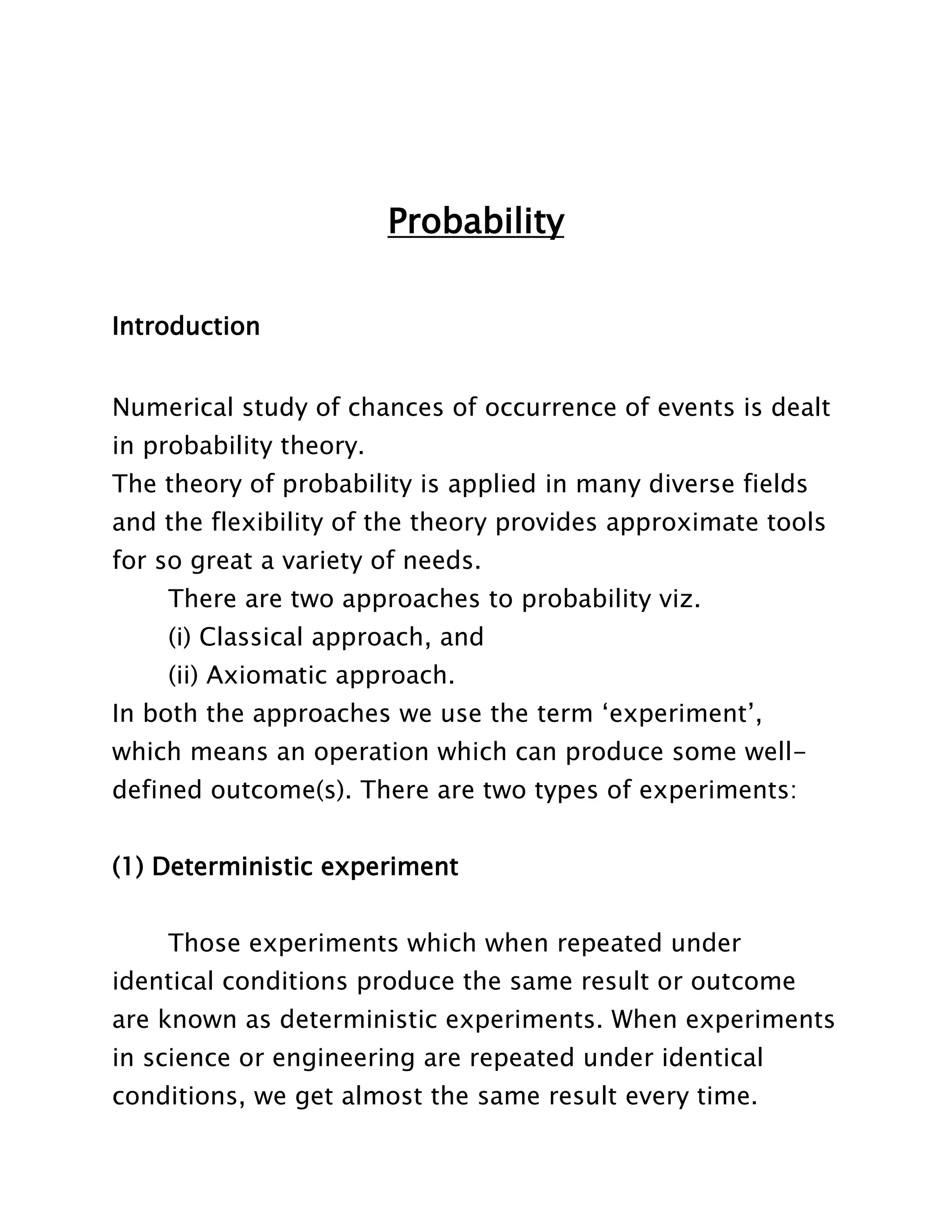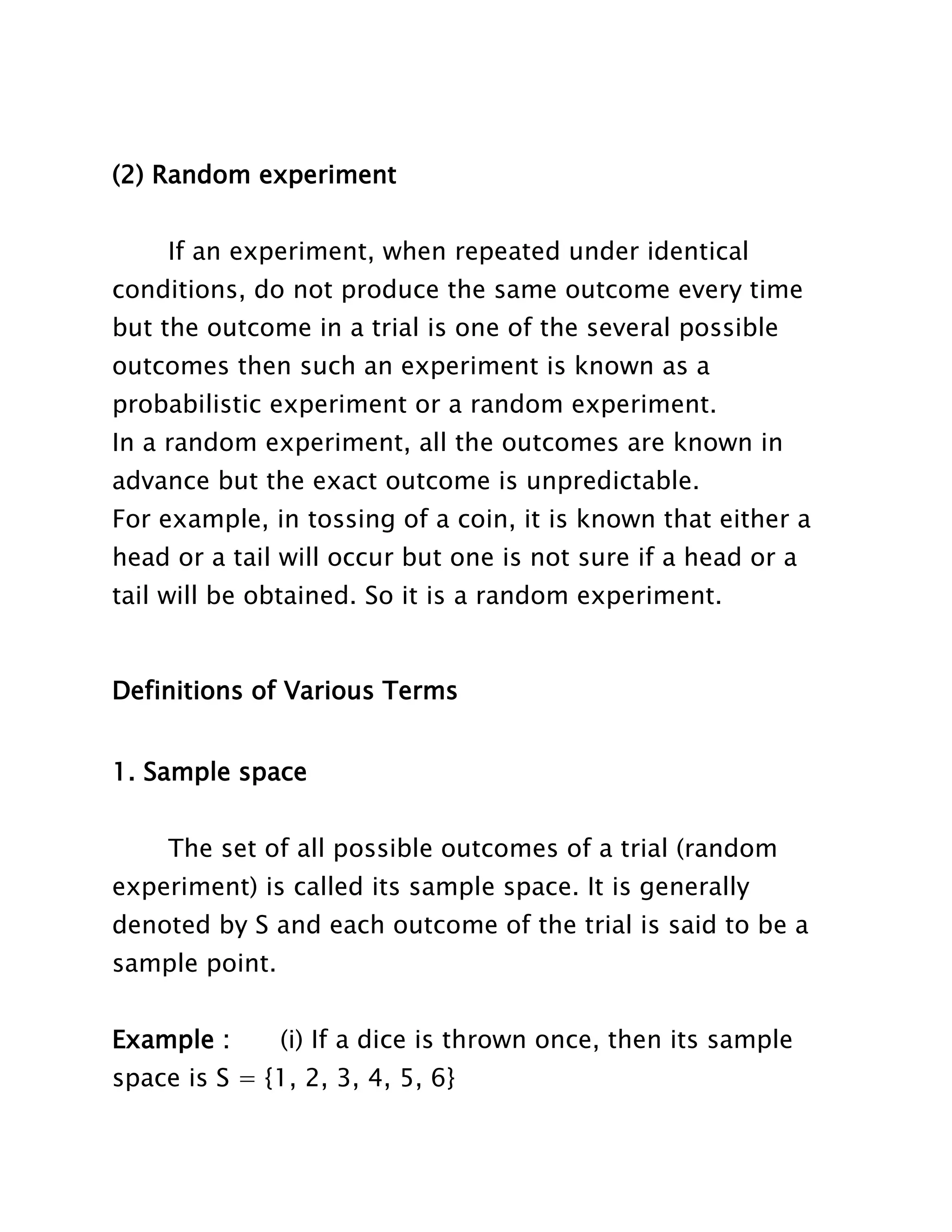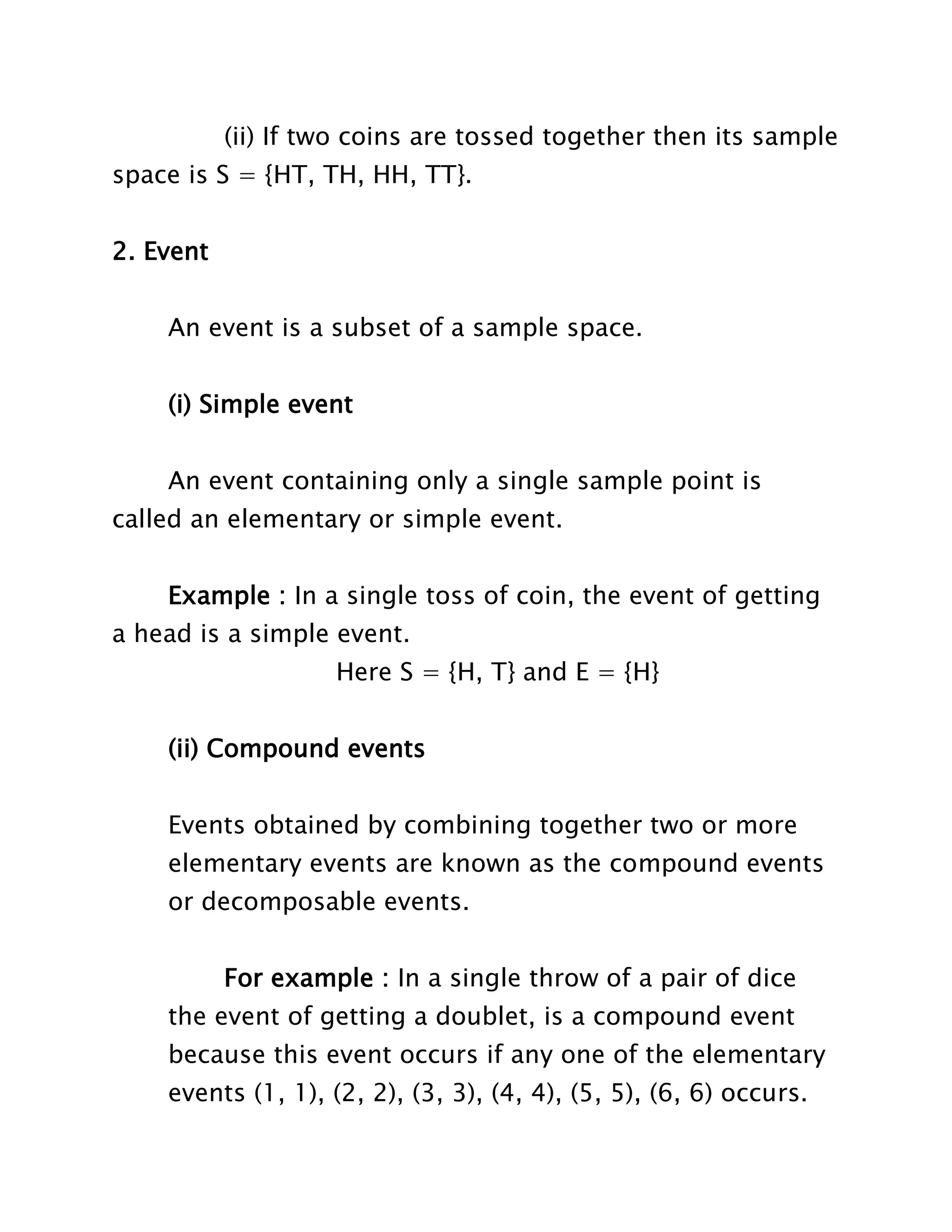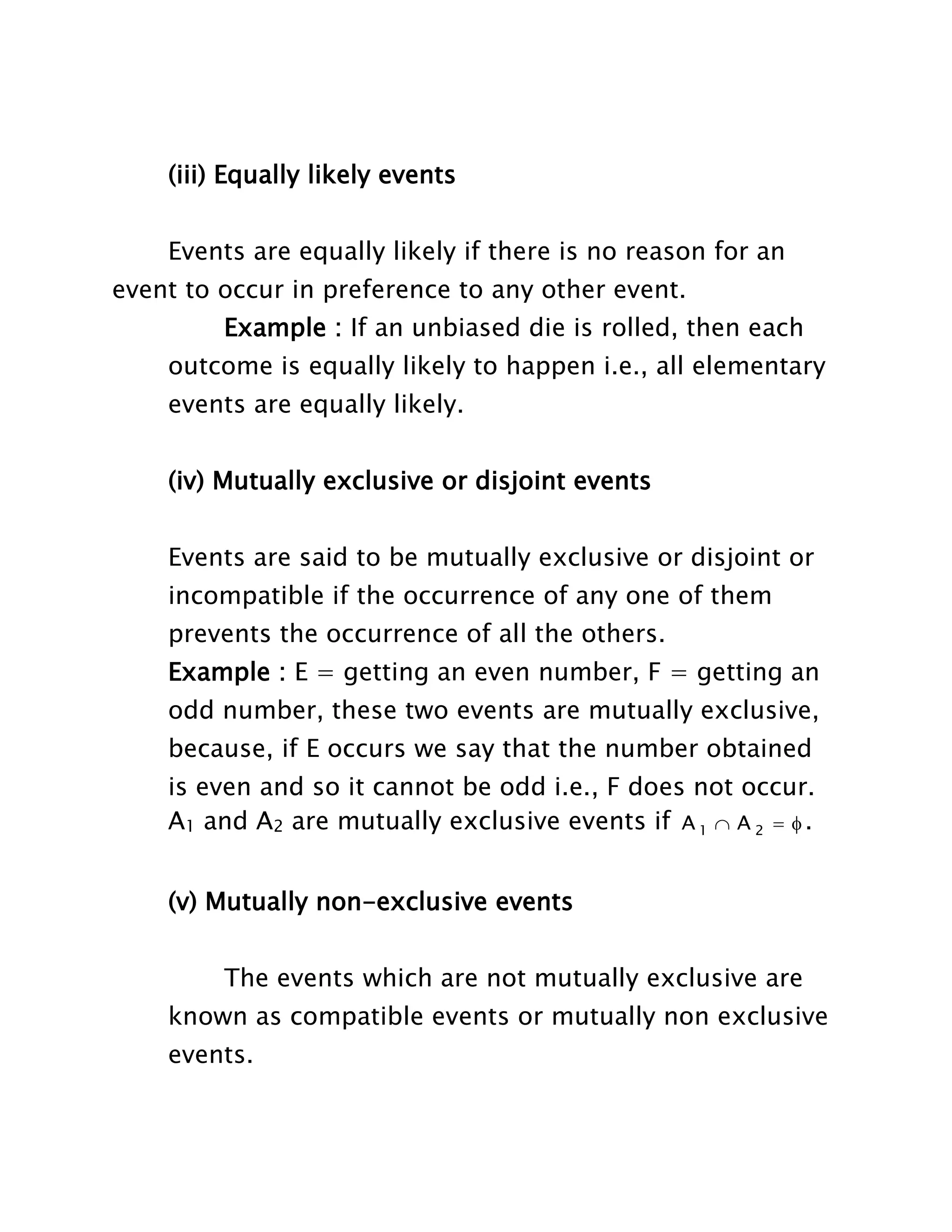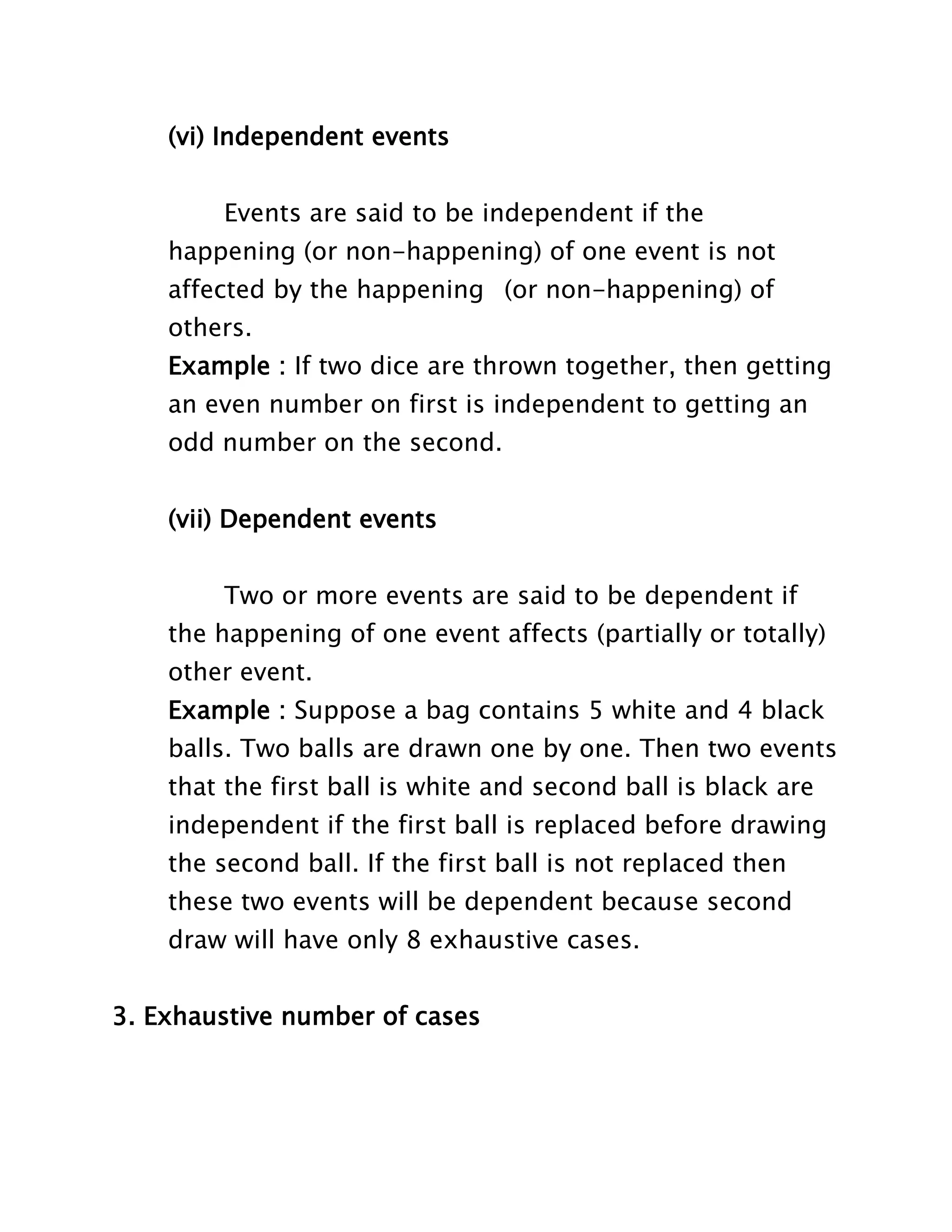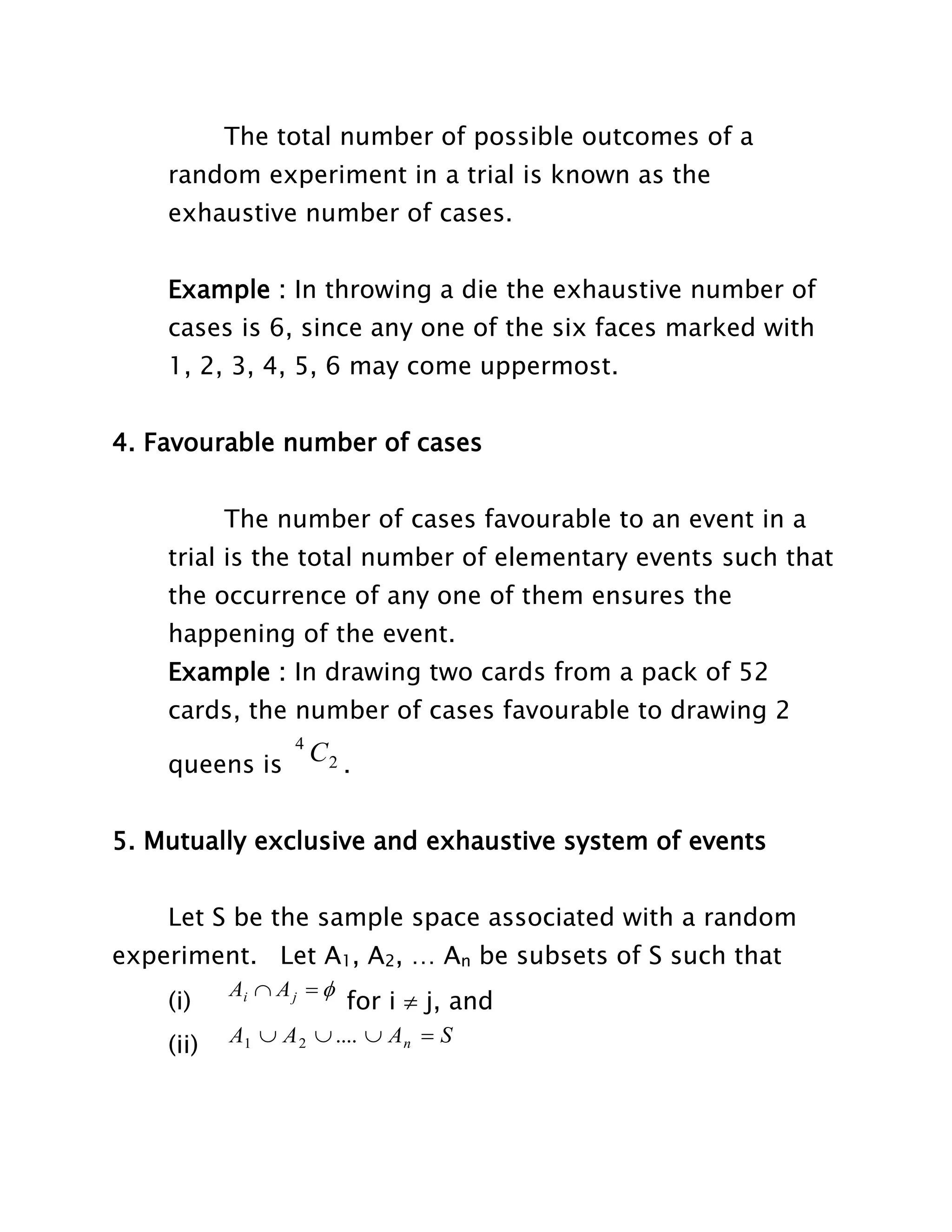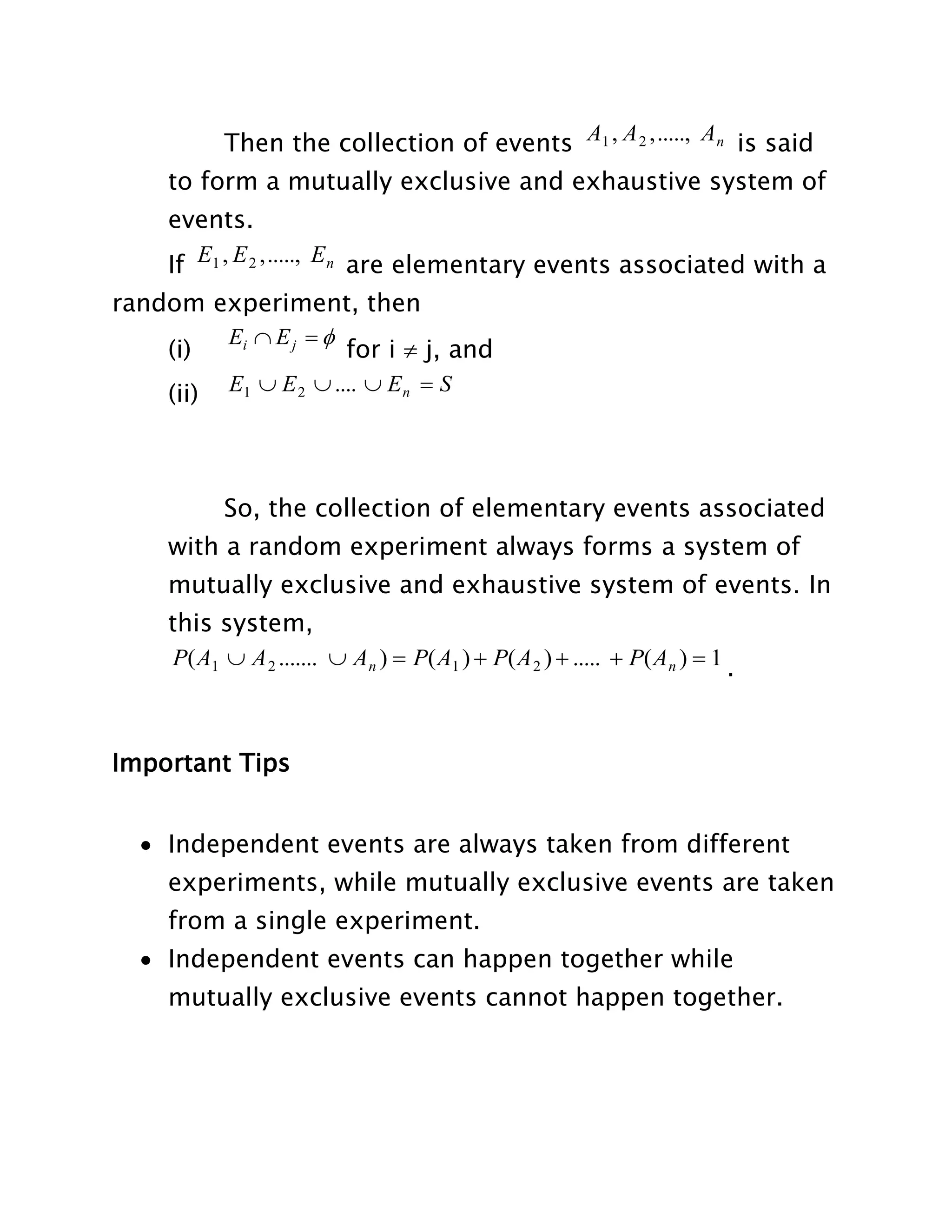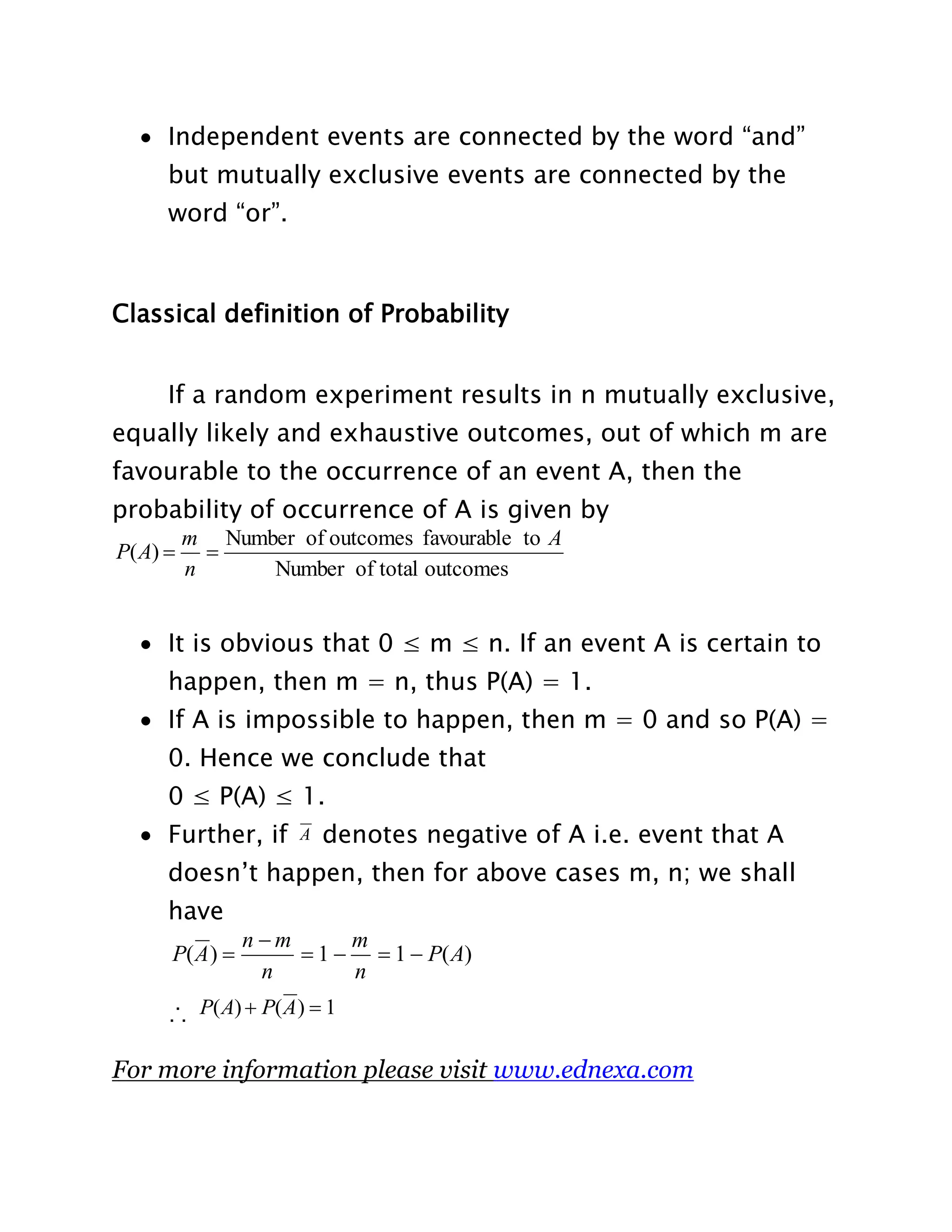This document defines key probability concepts and terms:
- Probability is the numerical study of chances of events occurring. It is applied in diverse fields.
- There are two approaches to probability: classical and axiomatic. Random experiments have uncertain outcomes but known possibilities, unlike deterministic experiments.
- Key terms defined include sample space, events, elementary events, compound events, equally likely events, mutually exclusive events, independent events, dependent events, exhaustive cases, and favorable cases.
- The classical definition of probability is the number of favorable outcomes divided by the total possible outcomes for random experiments with equally likely outcomes. Probability values must be between 0 and 1.
